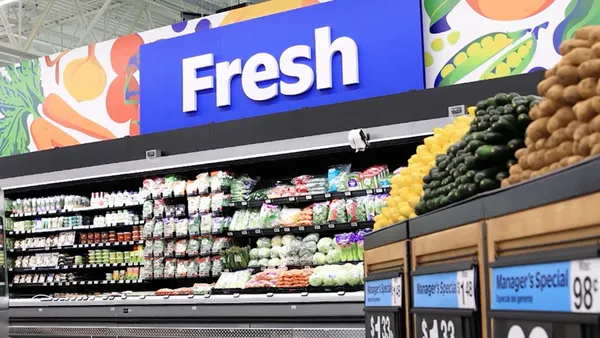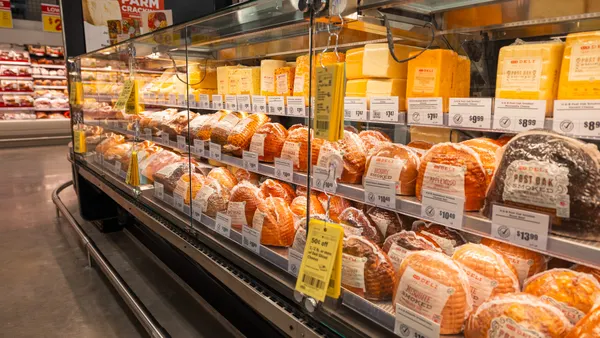Dive Brief:
- Food-at-home prices shot up 10% during the past year — the fastest pace since March 1981 — according to Consumer Price Index (CPI) data for March released by the U.S. Bureau of Labor Statistics (BLS) on Tuesday.
- The food at home index increased 1.5% over the prior month, slightly up from the 1.4% increase recorded in February.
- Food and energy costs drove inflation to 8.5% in March compared to the same month a year ago, marking the highest rate in more than 40 years as consumers continue to feel the sting of higher prices.
Dive Insight:
The steady drumbeat of month-over-month price increases continued in March, with the CPI increasing 1.2% on an adjusted basis after rising 0.8% in February.
For grocers, the results underscore the mounting frustration that consumers are feeling as they continue to pay more at the supermarket and at the gas pump. Many are starting to seek out cheaper brands, and retailers worry price-sensitive shoppers could eventually seek out cheaper stores, as well.
Grocery prices in March rose across all six major food categories measured by the BLS. Meats, poultry, fish and egg prices rose 1% while cereal and baker products increased 1.5%. Prices for fruits and vegetables rose 1.5%, down from the 2.3% increase recorded in February.
Numerous categories posted price increases in the low and mid-teens on a year-over-year basis. Citrus fruits posted a 19.5% increase over last March, according to the latest BLS data, while butter and margarine prices rose 14%.
Grocers are trying to keep price increases from reaching shelves on staple items like bread, meat and eggs. But that strategy is becoming increasingly difficult as costs continue to rise. Beef prices rose 16% compared to last year and 1% compared to February. Egg prices rose just over 11% and nearly 2% compared to February.
Food-away-from home sales, by comparison, rose 6.9% over the past 12 months and 0.3% over February, according to the latest BLS figures.
Fuel prices are further straining consumers’ wallets and driving up supply chain costs. The gasoline index increased just over 18% in March, accounting for more than half of the increase in monthly prices across all items.
A combination of factors, from supply chain snarls to higher packaging costs, have driven up prices in recent months. Now, the war in Ukraine is further compounding these challenges. Krishnakumar Davey, president of client engagement with IRI, told Grocery Dive on Monday that the firm recently increased its projected 2022 inflation range to 8% to 11% — an increase of around 50% over its previous projection, spurred by the conflict’s pressure on food commodities and fuel supplies.
During Albertsons’ fourth quarter earnings call Tuesday morning, CEO Vivek Sankaran said the company isn’t yet seeing any significant shifts in consumer behavior.
“We're still seeing the consumer is very strong. We're not seeing any meaningful trade down," he said, noting as an example the rise in organic food sales at company stores.
But value retailers see a clear opportunity ahead to nab more of consumers’ grocery spending, particularly among low- and middle-income consumers. Also on Tuesday morning, Aldi US CEO Jason Hart issued a letter to consumers saying the grocer will have the lowest prices in every market it serves.
“Whether you’re feeling the pinch at the gas pump or on your home energy bills, you can count on ALDI as a bright spot in your weekly budget,” Hart wrote.














